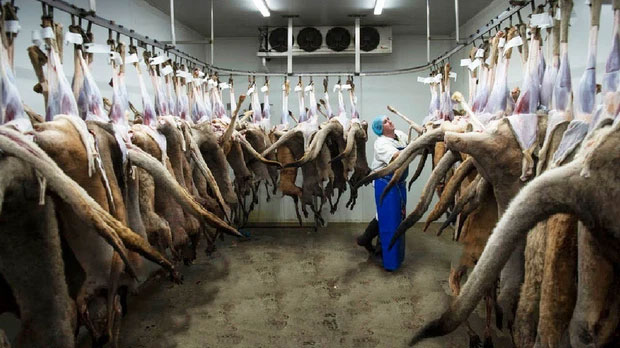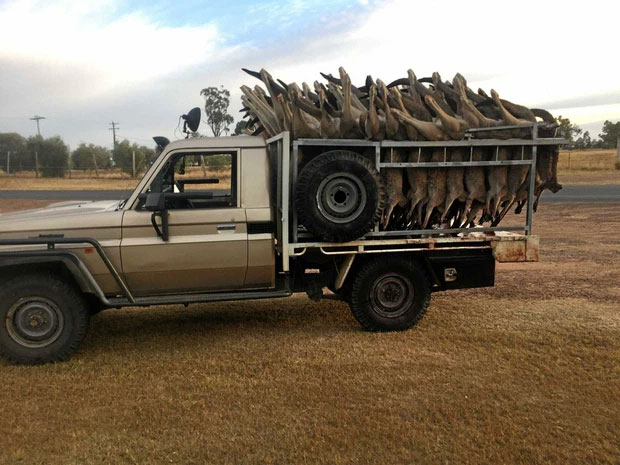This is a pest species for humans and has a remarkably strong population growth.
When talking about the most characteristic animal in Australia, you would likely think of the Kangaroo. Kangaroos are perfectly adapted to Australia’s dry environment, which is rich in deserts, allowing them to thrive throughout the country.
It can be explained that Kangaroos require less water to survive compared to other animal species. Specifically, a single Kangaroo needs only 1.5 liters of water per day, while a sheep requires about 11 liters, and a cow needs around 80 liters daily.

Dozens of Kangaroos being hunted (Photo: Noam Foam)
However, this very reason has made the Kangaroo one of the species that disrupt ecological balance due to their rapid population growth, as they damage crops and cause property losses. Consequently, humans have begun to “harvest” Kangaroos for food.
Kangaroo meat is high in protein and low in fat (around 2%), rich in minerals and vitamins, and has a high content of conjugated linoleic acid compared to other foods, making it highly valuable. It is estimated that the price of a Kangaroo is equivalent to that of a goat.
Furthermore, the number of Kangaroos exceeds that of any livestock species, with about 40 million Kangaroos, while there are only 3 million goats, 37 million sheep, and 7.5 million cattle. On the other hand, there are no costs involved in raising a Kangaroo as there are for other animals.

Results after a night of hunting (Photo: Pinterest)
In Australia, hunting wild Kangaroos for meat has been legalized through the Kangaroo Harvesting Program (KHP). The species targeted for hunting are the Eastern Grey Kangaroo (Scientific name: Macropus giganteus) and the Western Grey Kangaroo (Macropus fuliginosus).
Hunters primarily operate at night because Kangaroos have poor night vision, making them easy targets. Each year, Australians hunt up to 2 million adult Kangaroos.
However, this number is insignificant compared to their growth rate (increasing by 5 million in just 2 years). The hunting for meat only helps reduce the Kangaroo population by 10 to 20% due to legal restrictions on the number that can be hunted each season.


















































